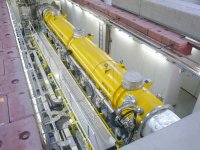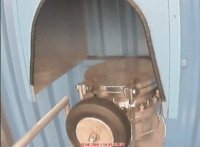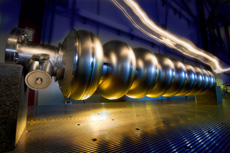One of the loveliest pieces of technology in high-energy physics is the superconducting cavity, whose highly polished metal bulbs, strung like pearls, would seem at home in an art gallery. The cavities are at the heart of FLASH, the Free-Electron Laser in Hamburg; the European X-Ray Free Electron Laser, which starts construction early next year at Germany's DESY lab; and the proposed International Linear Collider. Unfortunately for the beholder, these beauties ultimately vanish into fancy chillers, known as cryomodules, that keep them at temperatures close to absolute zero. This allows the cavities to conduct electrical current without resistance and thus accelerate subatomic particles to nearly the speed of light with maximum efficiency. (For a more detailed explanation of how cryomodules work, see this deconstruction in the Oct/Nov 2006 symmetry.)
What happens if something goes wrong? As Barbara Warmbein writes in ILC Newsline:
Particle physicists have the reputation that they need to smash things up in order to find out what they are about. Sometimes accelerator physicists get to smash stuff up, too: a group of engineers and technicians recently crash-tested a full cryomodule. They wanted to find out what the 12-metre piece of kit would look like if somebody happened to use the beam pipe as a stepladder, drive a tunnel vehicle into a flange or decide to rip out a vacuum pump.
 A module-shaped crash test dummy in the test bench. |
 Helium escapes through a safety flap of the crash test cryomodule's safety valve which protects the 2K cavity helium volume inside the cryomodule against too much pressure. Click here to download the video (3.5 MB). |
For those readers who don't have much patience: sorry, the module would not look much different from the outside—the test showed that they are rather robust. For all those who want to know more: here's more. The worst thing that can happen to a cooled cryomodule under vacuum is for the different vacuum systems to break down.
When the engineers put room-temperature air into parts of the cryomodule, "there was a rather loud noise and a massive cloud of helium at the safety valves,'' said the crash test initiator, Bernd Petersen. The noise apparently came from air whooshing in at nearly the speed of sound. But damage was minor, and the team was surprised and happy to learn that it would take as long as five seconds for warm air to travel from one side of the module to the other--potentially enough warning to close valves and keep damage from spreading.
You can read the full story here.
Photos courtesy of Fermilab (above) and DESY (at right)







